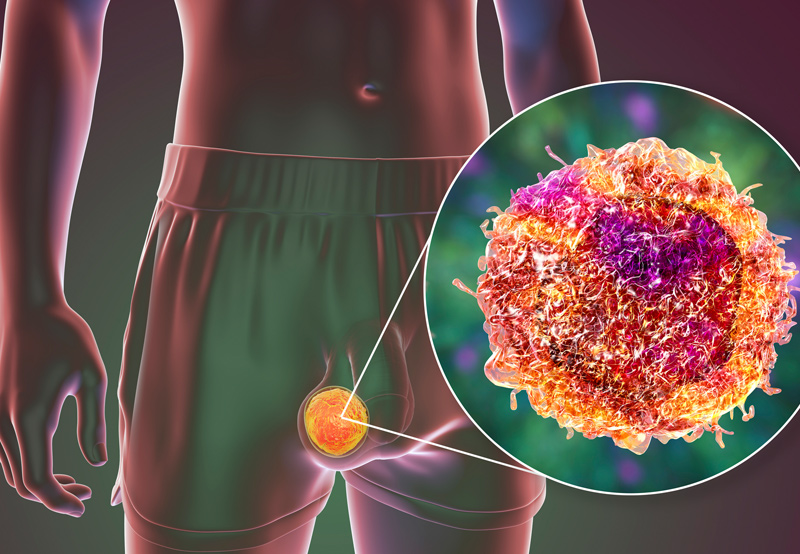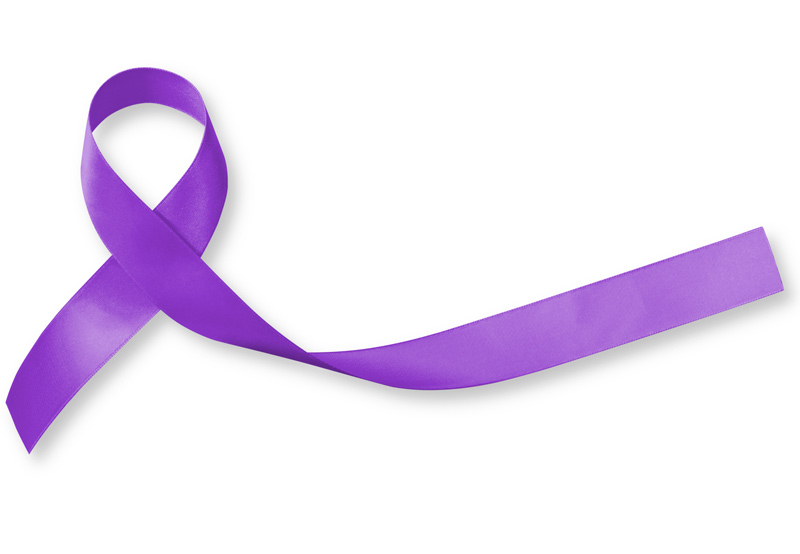

There is a good prognosis for testicular cancer, but early intervention is key.
Cancer that originates in the scrotum is referred to as testicular cancer. Located below the penis, the scrotum is a sac of skin that houses the testicles. Part of the male reproductive system, these two structures are responsible for the production of semen.
- Testicular cancer is more likely to affect adolescents, teens, and younger men.
- While this type of cancer is rare, it is often treatable when it’s limited to the testicles.

What Causes Testicular Cancer?
Seminomas and non-seminomas, the most common types of testicular cancer, develop in the germ cells that play a role in sperm production. It’s not known why germ cells sometimes become abnormal and malignant. If older men develop this type of cancer, it’s more likely to be pure or classical seminoma. Signs and symptoms associated with testicular cancer include:
- Visible lumps in one or both testicles
- Unusual feelings of heavier testicles
- Dull groin, abdominal, or back pain
- Tender or enlarged breast tissues
- Fluid retention in the scrotum
How Is It Diagnosed?
Men sometimes discover signs of testicular cancer themselves and go to their doctor for an initial exam. If testicular cancer is suspected, patients are often referred to a urologist. Testing that’s done typically includes a blood test and an ultrasound. Unlike most other forms of cancer, there’s usually no need for a biopsy to confirm a diagnosis of testicular cancer.
Treating Testicular Cancer
If cancer is suspected, the affected testicle is usually removed. It is then tested to determine if the abnormal tissues are cancerous. Analysis of the removed testicle can also determine which type of cancer is involved. The next step with treatment is to pinpoint a stage of the disease and look for signs of other affected tissues in the urinary system.
Staging may be done with a CT scan of the abdomen, chest, and pelvis. Additional blood tests may be done to look for specific markers. These markers can help a urologist tell if there is any cancer remaining following testicle removal.
Surgical removal of the affected testicle is the standard treatment for all stages of testicular cancer. If testing shows that that cancer has spread, additional surgery may be done to remove nearby lymph nodes.
Chemotherapy and Radiation
In some situations, chemotherapy drugs may be the only type of treatment recommended. Some patients receive post-surgery radiation therapy to ensure that all cancerous cells have been destroyed. This is usually done when seminoma is the type of testicular cancer that was diagnosed. Chemotherapy may also be suggested as a post-surgery treatment. The most common risk associated with chemotherapy is infertility. If men still wish to be able to reproduce following treatment, sperm may be preserved prior to surgery.
Because it’s possible to have testicular cancer without noticeable testicular pain, the odds of detecting the condition early can be increased with self-exams. Such exams can be done when showering. Any unusual lumps or abnormalities should be reason enough to see a urologist. Young men with a family history of testicular cancer or abnormally developed testicles may benefit from regular urological exams as a preventative measure.
